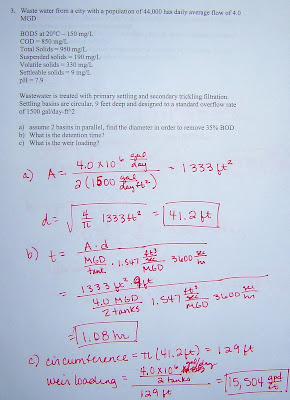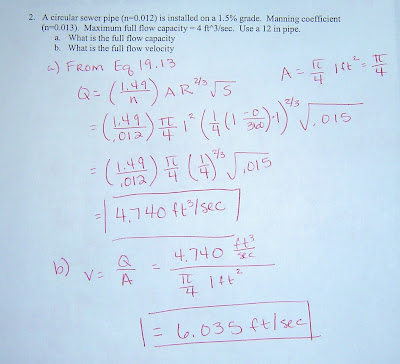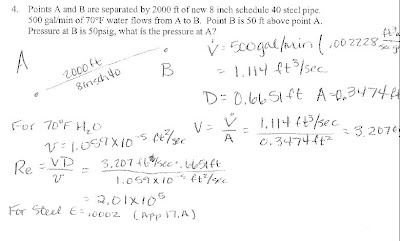New approach – review problems, not book, use book as reference to do problems. Unless there are no problems. The past 2 times I have gotten bogged down in reading the book and my reading comprehension being what it is, it's simply a waste of my time.
I am skipping the engineering economics – it’s easy stuff, one day of review should be plenty if you want to do that. I already did it back in January.
I have 52 days.
I also have a 16 ½ month old son. So time is precious.
At the very least I want to read through each problem and solution. Why? On my first attempt I remember seeing a problem that I had actually seen before. The numbers were off minimally and I was able to get the correct answer just by looking at the answer of the example and the choices for the test problem.
6 minutes solutions and ppi2pass are books and a website respectively.
Each day I will post at least a couple of problems.
So here’s the schedule:
19-Feb Fluids, Conduit Flow, Pumps
20-Feb Open Channel Flow
21-Feb Hydrology
25-Feb Water Supply
26-Feb Wastewater
27-Feb Pollution and the Environment
28-Feb Soils, Foundations, and Settlement
3-Mar Soils, Foundations, and Settlement
4-Mar Retaining Walls and Deep Foundations
5-Mar Retaining Walls and Deep Foundations
6-Mar Surveying
10-Mar Highway Curves
11-Mar Traffic and Accident Analysis
12-Mar Mixing Concrete and Concrete Beams
13-Mar Mixing Concrete and Concrete Beams
17-Mar Steel Beams and Columns
18-Mar Steel Beams and Colum
19-Mar Structural Analysis ns
20-Mar Structural Analysis
24-Mar Lindeburg Sample Exam
25-Mar Lindeburg Sample Exam
26-Mar NCEES Sample Problems
27-Mar NCEES Sample Problems
31-Mar Special Binder *
1-Apr Special Binder *
2-Apr Binders with ppi2pass and six minute solutions - Transportation
3-Apr Binders with ppi2pass and six minute solutions - Water Resources
7-Apr Binders with ppi2pass and six minute solutions - Environment
8-Apr Binders with ppi2pass and six minute solutions - Geotechnical
9-Apr Binders with ppi2pass and six minute solutions - Structural
10-Apr Binders with ppi2pass and six minute solutions - Structural
*The special binder is a binder that a friend used to help him pass, I will share parts of it with you.































 This layout seems ok, I wish you could click the picture and have it blow up...I will work on other methods. Maybe I will take pictures of my answers instead of scanning them.
This layout seems ok, I wish you could click the picture and have it blow up...I will work on other methods. Maybe I will take pictures of my answers instead of scanning them.
